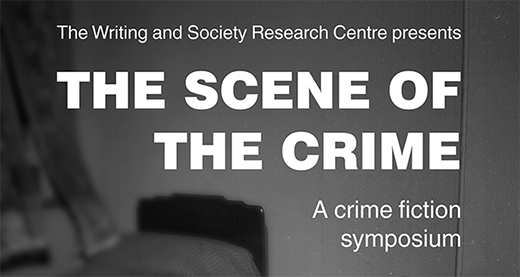Place in fiction is a powerful factor.
At its most basic it's about getting a sense of the physicality of a location. Reading this descriptive rendering of place sometimes provokes a sense of familiarity, sometimes a sense of discovery.
At its most complex, place in fiction excavates layers, going beyond the mere physical make up of a location to reveal the historical, social, cultural and political strata that construct a place and its people.
When it comes to crime fiction - place is usually one of the elements of the work that is most commented on in reviews. What would a review of
James Lee Burke be without commentary on the "sense of place" he creates in writing about Mississippi, or
Ian Rankin's rendering of Edinburgh?
The way place is used in crime fiction lends itself to close consideration.
I've written about it as part of my Masters degree.
In
The Millennial Detective: Essays on Trends in Crime Fiction, Film and Television, 1990-2010
I wrote a chapter,
Crime Fiction and The Politics of Place: The Post 9/11 Sense of Place in Sara Partesky and Ian Rankin, and talked at length about
Blacklist and
The Naming of The Dead, and the way place not only informed the location of the novels but shaped the plot, the politics, the people and the crime.
Place, politics and people were central elements in my novel
The Old School and I'm really excited to have been invited to come along and talk about this at
The Scene of the Crime a crime fiction symposium being held at The University of Western Sydney's Writing and Society Research Centre on Wednesday 27th June.
Come along.
It's going to be a fascinating day talking about crime fiction.
The details are below. If you fancy a day talking crime with crime writers and crime readers then RSVP to writing@uws.edu.au
Crime Fiction Symposium
Victorian London, post-WWI England, the mean streets of L.A.: in crime
fiction, place matters. It is crucial to the evolution of the genre and
the signifying possibilities of specific texts. Has this changed in
recent years? Intensified? Diversified? Think Rebus’s Edinburgh,
Wallander’s Ystad, Ellroy’s L.A.
How do crime narratives imagine the
city and the country, the sprawling metropolis and the regional locale,
urban decay and vanishing wilderness?
From Melbourne to Massachusetts, New Orleans to New Zealand, Botswana
to Bankstown, from the Yorkshire moors to the Siberian tundra, from
bayou to desert reservation: the scene of the crime and the journey of
detection shape popular and literary crime fiction alike. ‘The Scene of
the Crime’ asks, what is the relationship between crime fiction and
representations of place?
Morning session-
Matt Mcguire: Ian Rankin’s Edinburgh
Sara Knox: ‘An Englishman’s Home is His Castle’: the crimes of Alan Bennett
Respondent: Jane Goodall
Afternoon session-
Ross Gibson: “A Hammer is Struck in the Mind”
Novelist Pam Newton: reading from ‘The Old School’
Comments: Jane Goodall
Lunch will be provided.
10.30—2pm, Wednesday 27 June 2012, UWS Bankstown Campus, room 3.G.55
Please RSVP to writing@uws.edu.au






